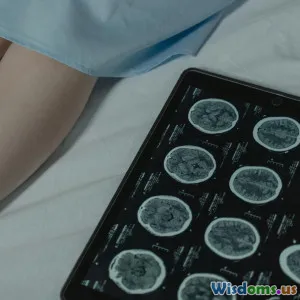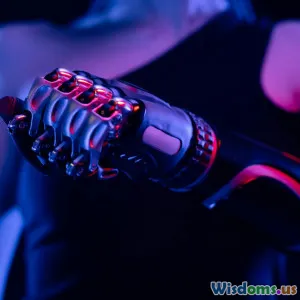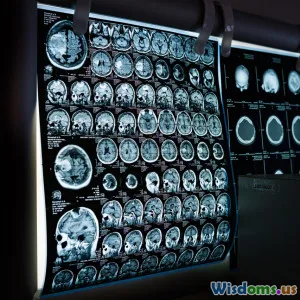
Can Brain Computer Interfaces Restore Speech in Paralyzed Patients
8 min read Explore how Brain Computer Interfaces are revolutionizing speech restoration for paralyzed patients through cutting-edge technology. (0 Reviews)
Can Brain Computer Interfaces Restore Speech in Paralyzed Patients?
Imagine being trapped inside your own body, unable to communicate even a simple word—this is the harsh reality for many paralyzed patients who lose the ability to speak. Modern medicine and assistive technologies have long sought to bridge this communication gap. Today, Brain Computer Interfaces (BCIs) stand at the forefront of this transformative effort, offering new hope to patients frozen in silence.
Understanding the Communication Barrier in Paralysis
Paralysis, especially resulting from spinal cord injuries or neurodegenerative diseases, often disables motor function, including the muscles responsible for speech. Patients with conditions such as amyotrophic lateral sclerosis (ALS) or brainstem stroke may retain cognitive functions and intention to speak but lose control of vocal muscles, rendering verbal communication nearly impossible.
Traditional assistive tools like eye-tracking communication boards or text-to-speech devices depend on residual motor skills, limiting their effectiveness for severe cases. Herein lies the promise of BCIs — directly harnessing brain signals to bypass damaged motor pathways.
What Are Brain Computer Interfaces?
Brain Computer Interfaces are systems that establish a direct communication link between the brain's neural activity and an external device. By capturing and interpreting brain signals, BCIs can translate thoughts or intentions into actions without the need for physical movement.
Example: The Neuralink project, co-founded by Elon Musk, is a well-known BCI initiative aiming to implant tiny electrodes in the brain to facilitate high-bandwidth communication with computers, potentially enabling speech decoding.
BCIs come in two main types:
- Non-invasive BCIs: These use external sensors like EEG caps placed on the scalp. While safer and easier to deploy, they offer lower signal resolution.
- Invasive BCIs: These involve implanting microelectrode arrays inside the brain, offering superior signal fidelity but with surgical risks.
Decoding Speech from Brain Activity: How Close Are We?
One of the most challenging aspects is mapping specific neural patterns to speech components — phonemes, words, or entire sentences.
Advances in Neural Decoding for Speech
In recent years, research labs have made remarkable strides. In a landmark 2021 study at the University of California, San Francisco, researchers used implanted electrodes near the speech motor cortex in tetraplegic patients to decode imagined speech.
- Method: Participants attempted to speak silently, and neural signals were translated using machine learning algorithms into synthetic speech signals.
- Results: The system achieved up to 70% accuracy in converting neural data into recognizable sentences, a significant improvement over past models.
Similarly, at the Wyss Center in Switzerland, scientists developed an implantable BCI that synthesizes speech in real time by recognizing imagined words, illustrating the growing sophistication of the technology.
Real-world Clinical Examples
One remarkable case is that of Dr. Philip Kennedy, who implanted microelectrodes in a locked-in patient’s brain allowing her to communicate by spelling out words, re-establishing basic conversation capability.
Moreover, in 2022, a paralyzed man was able to vocalize sentences using a BCI developed by Stanford University, which decoded his brain signals into text displayed on a screen with unprecedented speed and fluidity.
Challenges Facing Speech-BCI Restoration
Despite exciting progress, several challenges remain:
- Signal Variability: Neural signals can fluctuate over time or due to electrode shifts, impeding consistent decoding.
- Complexity of Natural Speech: Human speech involves nuanced motor patterns, intonation, and emotion; replicating this through BCIs is extraordinarily complex.
- Surgical Risks and Longevity: Invasive BCIs require brain surgery, and long-term biocompatibility and electrode lifespan are concerns.
- Personalization and Training: Patients need extensive individual calibration and training to optimize BCI performance.
Ethical and Social Considerations
Integrating BCIs into healthcare introduces ethical questions about privacy, autonomy, and equity. How do we ensure that neural data remains confidential? How do healthcare systems make such advanced therapies accessible to all patients, not just a privileged few?
Experts emphasize the importance of developing robust legal frameworks alongside technical innovation to safeguard patients’ rights.
The Future: Towards Naturalistic Communication
Scientists envision next-generation BCIs integrating artificial intelligence, natural language processing, and more sophisticated sensors, enabling:
- Smoother, fluent synthetic speech synthesis that replicates emotional tone and prosody.
- Wireless, minimally invasive implants reducing patient risk.
- Closed-loop feedback systems where the BCI adapts and learns from user behavior in real time.
Companies like Synchron are developing stentrodes implanted via blood vessels to reduce surgical risks, making BCI adoption more feasible.
Conclusion: Hope Realized and a Path Ahead
Brain Computer Interfaces represent a revolutionary frontier in restoring speech for paralyzed patients. Through decoding neural activity directly tied to speech intention, these systems bypass damaged physical pathways, offering a new voice to those silenced by paralysis.
While hurdles remain—from technical, ethical, and practical standpoints—the pace of advancement fuels optimism. Each clinical trial, each successful communication, underscores a profound impact: enabling connection, dignity, and independence.
For patients locked within their own minds, BCIs are more than machines—they are gateways back to human interaction and hope.
References
- Moses, D. A. et al. (2021). Neural speech decoding with paralyzed participants. Nature Communications, 12, 3914.
- Anumanchipalli, G. K., Chartier, J., & Chang, E. F. (2019). Speech synthesis from neural decoding of spoken sentences. Nature, 568(7753), 493–498.
- Vansteensel, M. J., et al. (2016). Fully implanted brain–computer interface in a locked-in patient with ALS. New England Journal of Medicine, 375(21), 2060–2066.
- Neuralink and emerging brain-machine interfaces: https://neuralink.com/
- Synchron Holobiont clinical trials: https://synchron.com/clinical-trials/
The promise of BCIs continues to grow, signaling a remarkable shift in how we think about communication, technology, and the human spirit.
Rate the Post
User Reviews
Popular Posts



















